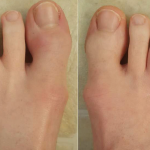The findings indicated that patients with fibromyalgia (29% by the criteria used) were less likely to respond to either a biologic DMARD or targeted synthetic DMARDs, irrespective of other predictors of outcome.
These findings are important for practice and suggest the value of assessing fibromyalgia in PsA patients to interpret better treatment response; the presence of fibromyalgia could also prompt initiation of adjunctive therapies directed specifically directed at fibromyalgia.
In the trial setting, the findings suggest the efficacy of new agents may be difficult to determine; it is not unlikely that patients enrolled in trials would have a greater burden of fibromyalgia that has contributed to their apparent lack of response to prior agents. Such patients could be categorized as having difficult to treat PsA although the difficulty may reflect concurrent fibromyalgia rather than ongoing inflammation.
6. Opportunity Window for Treatment
Abstract 1641: Snoeck Henkemans et al.6
The window of opportunity is an interesting concept that has been explored most often in the context of RA; this concept suggests that, early in the course of RA, there may be a time in which therapy is uniquely effective in modifying subsequent disease course. It is difficult to determine whether such a window of opportunity actually exists because, in the real world, treatment can be significantly delayed. These delays may occur related to patients seeking medical attention, providers recognizing the signs of early synovitis, and providers referring patients to rheumatologists. Given the gradual onset of symptoms in many patients, the window may close (to the extent that a window exists) before treatment starts.
To apply the paradigm of the window of opportunity to PsA, Snoeck Henkemans and a research team from the Netherlands investigated newly diagnosed PsA patients from the Dutch Southwest Early PsA cohort (DEPAR), dividing the population into three groups on basis of the total delay from onset of symptoms until diagnosis and treatment (<12 weeks, 12–52 weeks and >52 weeks); follow-up was three years.
As the data indicate, delays from both patients and providers were long and totaled 42 weeks; delays occurred more commonly in women than men and were associated with lower joint counts, as well as lower values of C-reactive protein and erythrocyte sedimentation rate. Patients with delay also more often had enthesitis.
Among treated patients, those with >52 weeks’ delay were less likely to achieve minimal disease activity or a remission than the other groups. Delay was also associated with higher values for HAQ-DI over the three-year follow-up. This study supports findings on the effects of early treatment on RA and highlights the need for reducing treatment delays.


